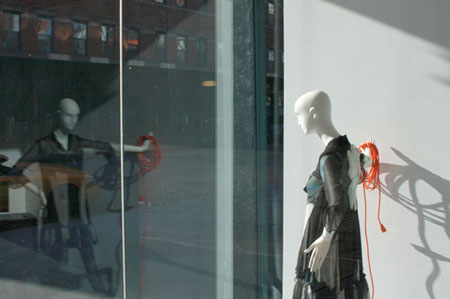Light Readings
All
Photos © 2007, George Schaub, All Rights Reserved |
While a brave effort, the patterned meter "wants" to open up the dark area in this image and while it does so overexposes the brighter part of the frame. Even with some shadow/highlight fixes there's little hope for recovering the overexposed highlight here. This is a tough shot for any automatic meter, be it evaluative, matrix or patterned.

|
The easy solution for this shot is to look at the light, consider your options and take control. Here a center-weighted-averaging pattern was used. The finder was pointed toward the right side, the exposure locked and then the shot was recomposed. This solved the exposure quickly and easily and balanced the light and dark side of the image "as seen."
With these patterns you revert, if you will, to the "old" way of exposure reading, which means that wherever you take the reading from will yield an exposure that averages the readings to a middle gray or, in the case of the spot, yields a middle gray brightness value on the brightness area you have read from. This middle gray works wonders when you have a range of brightness values in the scene--it in essence sorts the values for you, thus records the brighter areas brighter and the darker areas darker on whatever medium you are recording. So, if you have three general brightness values, such as f/4, f/8 and f/16, the averaged exposure will be f/8 (two stops from each side, if you will) and that means that all the brightness areas will be fine. This is a very generalized description but it's pretty much how it works.
With spot reading you actually "place" the small area in the finder on the brightness value you wish to read and then make your decisions from there. Want to "move" a brighter value to middle gray (a strategy for saturating a bright color, for example)? Then just place the spot over that value and use that reading. Want to insure bright highlights and not deepen shadow values to excess? Then read the highlight and use +1 exposure compensation, or slightly more in very bright conditions.
While matrix, evaluative or whatever might "solve" all these exposure situations I always think it's more fun and challenging to tackle it yourself, and in the bargain gain lots more exposure control. Learn how to work with spot and CWA patterns and you'll rarely have to reshoot to get the exposure right.
- Log in or register to post comments












































